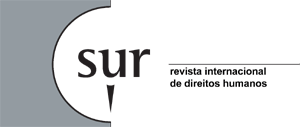BOOK REVIEW
Science in the Service of Human Rights, Richard Pierre Claude, (University of Pennsylvania Press, 2002).
What tools do we currently have to assure that scientists can develop, produce, present and diffuse their knowledge and at the same time remain free from ideological pressure? What instruments do we have to control the development, production, diffusion and use of scientific advances that are known to cause an enormous amount of harm? How can we structure such controls in ways that do not interfere with scientific freedom? How can we redistribute universally beneficial scientific and technological advances? These are the main questions explored by Richard Pierre Claude, in his book Science in the Service of Human Rights.
The author presents a completely thorough description of the historical development, norms, contemporary issues and relevant factors of the relationship between science and human rights. His description provides an exceptional source of information for professors, students and human rights activists, as well as world scientists. Yet at the same time, it shies away from addressing thorny political questions such as: why has scientific innovation been centered on creating incentives for private investment instead of focusing on incentives to benefit the public? What negative consequences result from placing such high value on individual production and scientific freedom, as represented currently by the entire structure of intellectual property rights, yet at the expense of the rights of the citizens of the world to scientific advancements? What would the world be like if the normative structure of human rights, as related to science, were more a socialist structure than a liberal one?
The main objective of the book is to make available to people at the grassroots level both access toand control ofscientific advancements, and to make these instruments manageable and understandable. Additionally, the author wants to link the awareness of scientists to the Universal Declaration of Human Rights in order to illustrate the guarantees that Declaration crystallizes for scientific freedoms; as well as to show an establishment of the human right of all people to enjoy the benefits of science. In other words, Richard Pierre is interested in the interplay between science and human rights in a way in which human rights can control the misuse of science, and in ways in which science can benefit from the practice and enjoyment of human rights.
This objective is accomplished by using three different approaches to illustrate the natural and beneficial relationship between human rights and science: first, through a narration of success stories of past and present interactions; then by a description of norms and practices that have been developed as a consequence of those success stories, and finally by illustrating areas where work is still to be done.
In this sense, Pierre has presented a detailed narrativepast and presentof the exchanges and interactions between scientists and human rights activists, specifically those that have been able to negotiate and determine the norms that frame the field. This approach allows the author to demonstrate a natural alliance between activists and scientists. In Chapters 2 and 3 the author describes the relationship between these two communities in the drafting of the Universal Declaration of Human Rights, as well as in the International Covenant on Economic, Social, and Cultural Rights. Additionally, in Chapters 7, 8 and 9, the author describes the contemporary ways in which technological and scientific advancements are employed by citizens in promoting human rights, and the diverse forms in which scientists can use human rights to protect their scientific freedoms.
The second approach describes the set of norms and practices that have been put into place as a result of these interactions. While these examples permeate the whole book; they are specifically presented in a detailed analysis of two articles: Article 27 of the Universal Declaration of Human Rights and Article 15 of the International Covenant on Economic, Social and Cultural Rights. Additionally, Chapter 10 describes an establishment of codes of conduct for multinational corporations. These codes of conduct portray the desirable practices that have been developed as a result of relationships between scientists and activists.
Finally, the third approach shows that although there are success stories that could make us optimistic for humanity, there is still much work to be done. Here the author illustrates some issues where a lot of work could be done: medicine and health, for example, as well as computing and internet technology.
Nevertheless, the book plays down the many ways in which the relationship between these two communities could be perceived as antagonistic; the marginal results provided by the norms and practices in the human rights arena and the overwhelming tasks that remain if we are to take the field of science and human rights seriously. It seems the author places too much faith in the power of international laws, without thoroughly acknowledging the diverse range of difficulties that this field of law faces, in both the local and the transnational sense. For example, the following unanswered questions are raised by Pierre's narrative: what do wethe members of the global communityeither win or lose when technological and scientific advancements (as well as their control) are articulated in the language of human rights? How have the differences of economic power and scientific advantages which lie between the center and the periphery of the global community influenced the structure of the norms of human rights in relation to science? How would the appearance of the pharmaceutical industry be changed if the entire field were centered on collective rights and scientific responsibility, instead of being focused around scientific freedoms and the protection of individuals?
Helena Alviar García* * Director of the Master Program at the Universidad de los Andes. Graduated on Economic Law at Harvard University.
Publication Dates
-
Publication in this collection
22 Sept 2008 -
Date of issue
Dec 2006

